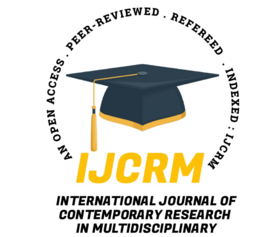International Journal of Contemporary Research In Multidisciplinary, 2025;4(4):379-385
Ayurvedic Management of Eye Disorders
Author Name: Dr. Dinesh Singh Gaur; Dr. Subrat Kumar Nayak; Dr. Kavita Rathore; Dr. Dharmendra Sharma; Dr. Nitin Urmaliya;
Abstract
The ancient Indian medical system known as Ayurveda provides a thorough, dosha-based method of eye care that incorporates physiological, energetic, and anatomical aspects. Using traditional texts such as the Sushruta Samhita and Charaka Samhita as well as current clinical research, this paper examines the Ayurvedic understanding and treatment of eye disorders. Using the principles of Dosha imbalance, affected ocular layers (Patalas), and systemic correlations, it presents the Ayurvedic classification of 76 types of Netra Rogas (eye disorders). We look at the Ayurvedic pathogenesis (Samprapti) and treatment methods for common conditions like glaucoma, dry eye syndrome, conjunctivitis, blepharitis, refractive errors, and retinal disorders. Doshic balance, detoxification, nourishment, and ocular tissue regeneration are the main goals of Ayurvedic treatments like Rasayana (rejuvenation), systemic Panchakarma (detoxification), and Kriyakalpa (local ocular procedures like Tarpana, Anjana, and Ashchyotana). Herbal remedies with anti-inflammatory, antioxidant, and neuroprotective properties include triphala, amla, haritaki, and turmeric. Integration with contemporary ophthalmology shows encouraging results, particularly in degenerative and chronic conditions, increasing effectiveness and decreasing adverse effects. Ayurveda has drawbacks, including a lack of standardization, a dearth of extensive clinical trials, and limited applicability in acute emergencies, despite its holistic and preventative advantages. Its potential as a complementary system is noteworthy, though, and this study promotes the integration of Ayurvedic ocular practices with contemporary ophthalmology to create a more sustainable, cost-effective, and safe model for comprehensive eye care.
Keywords
Ayurveda, Netra Roga, Dosha, Retinal Disorders, Kriyakalpa, Panchakarma, Tarpana, Rasayana, Herbal Ophthalmology, Eye Care





